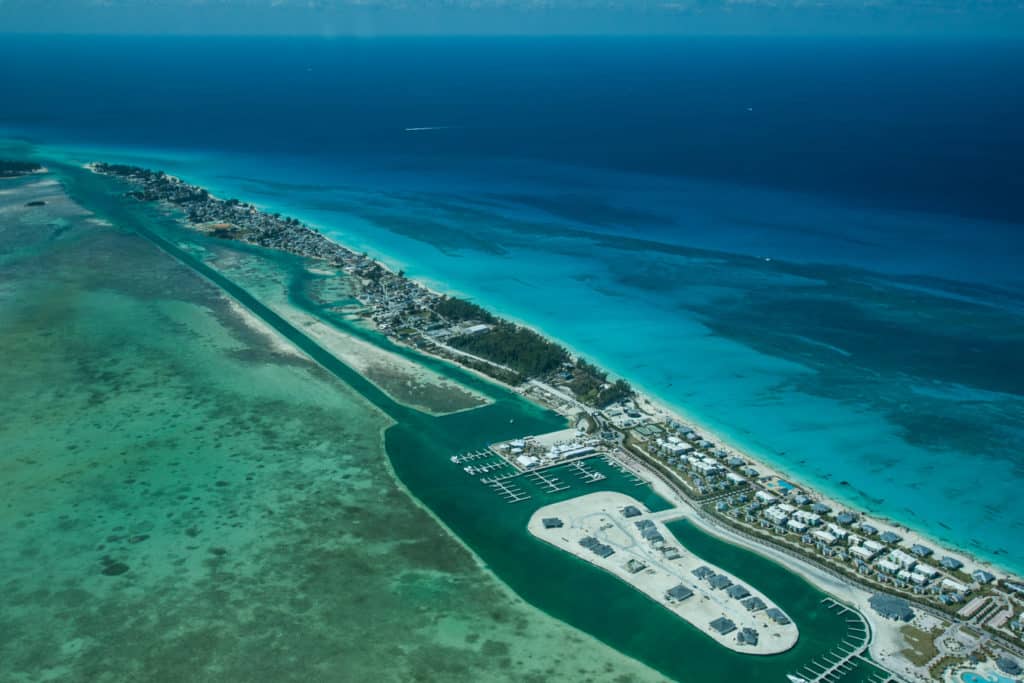
Anglers traveling to Bimini, Bahamas, should have high fishing expectations. I had the chance to visit North and South Bimini in June 2017. My plans were for an exciting trolling bite, with marlin, sailfish, dolphin, yellowfin tuna and mackerel providing the entertainment. Inshore, I wanted to chase bonefish and permit on crystal clear flats surrounded by untouched mangroves.
But June weather in the tropics is always a gamble, and on this trip, I lost. Thunderstorms rolled across South Florida, the Gulf Stream and pummeled Bimini for a week straight. Bimini definitely gets storms in summer months, but not often for the sustained days we experienced, said Michelle Malcolm, director of public affairs at Hilton at Resorts World Bimini.
There’s nothing Bahamas Tourism or the Hilton could have done to prevent the crushing rain, obnoxious winds and threatening lightning. Chances are you’ve experienced your own bad-weather fishing trip.
Even with fishing trip cancellations and constant threats of thunderstorms, we tried to make the best of foul-weather-gear-worthy conditions. The gallery below might provide some ideas for anglers to help pass time while waiting for the weather window to open.
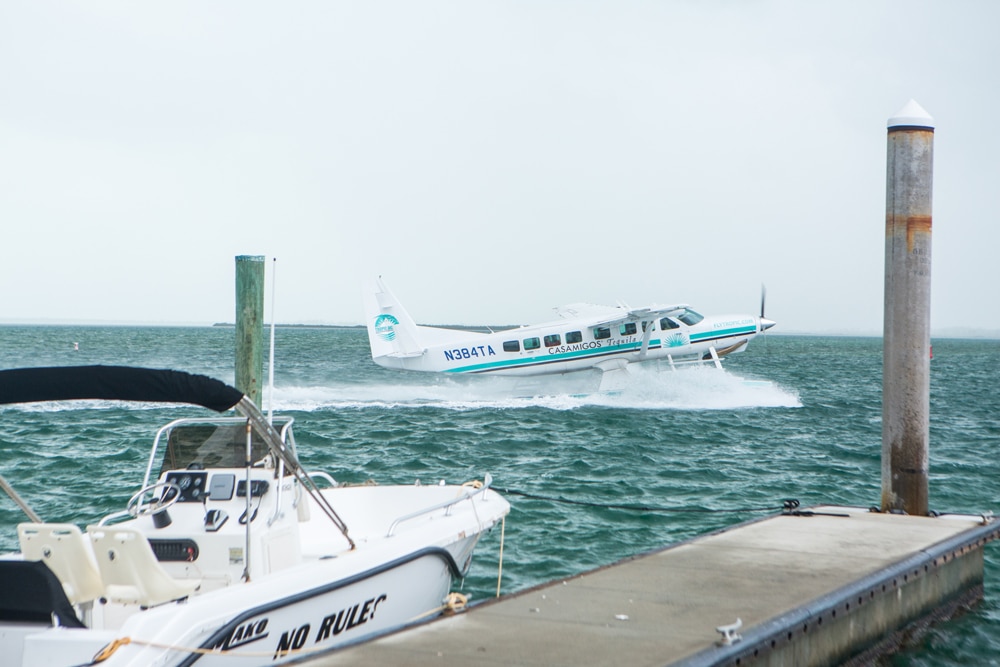
Our initial flight to the Bahamas was delayed a couple hours because of weather. Maybe I should have treated that as a sign of things to come?
Sport Fishing photographer Zach Stovall and I eventually flew on Silver Airways, a comfy 30-minute flight from the Fort Lauderdale to Bimini airports.
Pictured is another available transportation option to the island: seaplane. The seaplanes land right out in front of the Fisherman’s Village Marina at the resort.
Many offshore anglers cross the Gulf Stream in their personal boats to reach the island. Private vessel owners must check-in with Bahamas customs and immigration, plus have a stamped passport and valid Bahamian fishing permits.
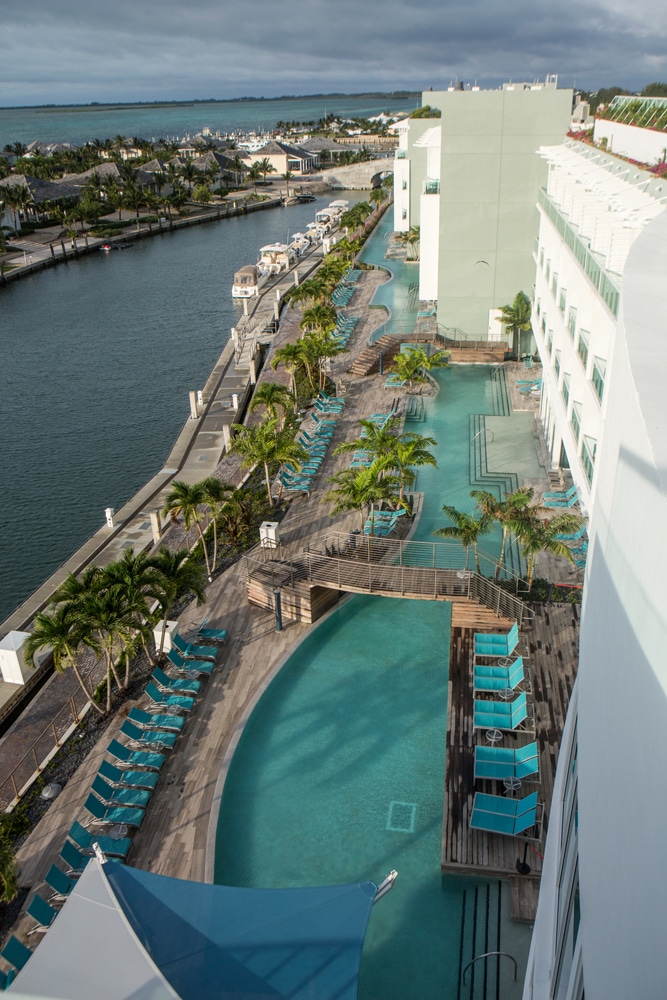
Our first full day of fishing was completely canceled due to dangerous weather and wave conditions. This allowed us to really explore the Resorts World Bimini grounds, which includes different restaurants, shops, bars, full casino, massive marina complex that handles boats up to 180 feet, and a lazy river pool (pictured).
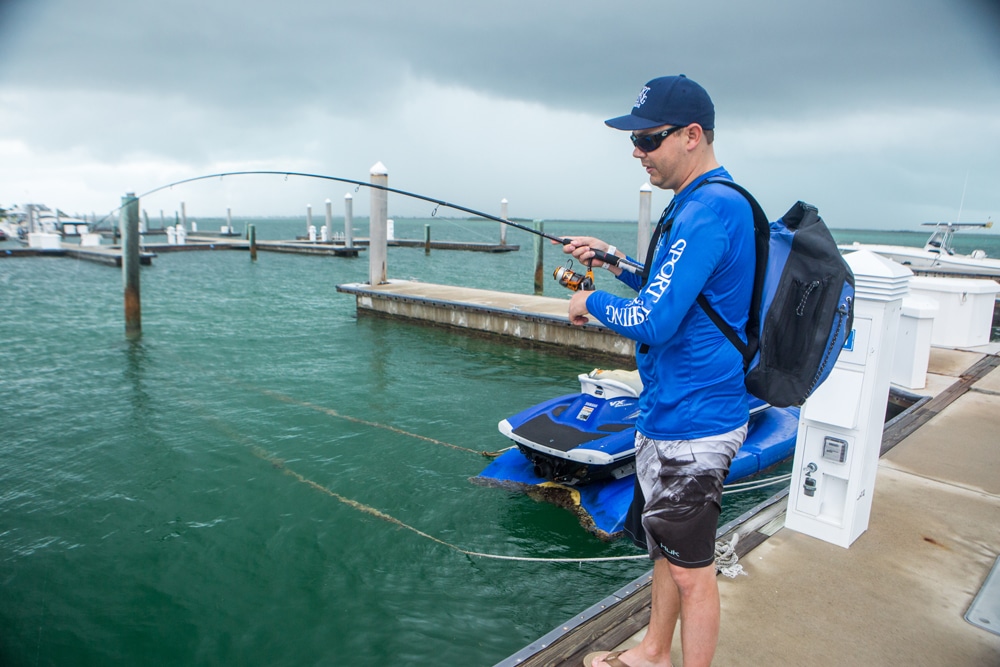
Completely flustered by the weather, we set out to find somewhere to fish on the island. Luckily, a scuba shop at the marina provided rod rentals, and frozen squid was available at a nearby bait shop. They must have thought we were crazy to fish between squalls. I started fishing around the different boat slips, eyeing different colorful snappers and groupers.
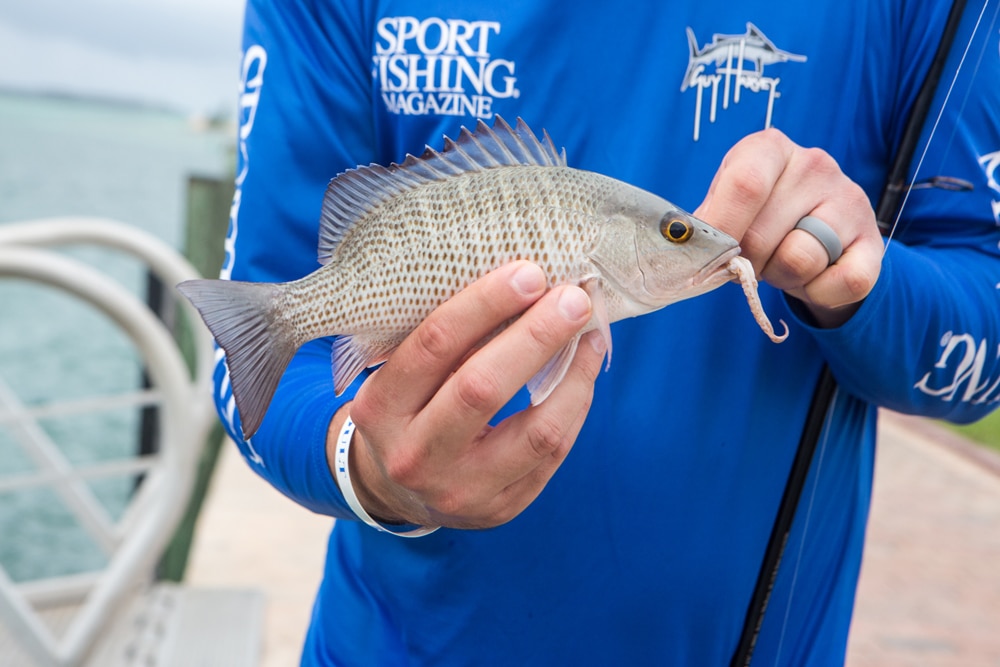
This pint-size mangrove snapper was just one of a couple different species we caught, including grunts, blue runners, yellowtail snapper, lane snapper and mutton snapper. At one point, we found an unused pontoon boat with hard top and canvas sides that served as a shelter between fronts. An open window provided great access to fish while it rained.
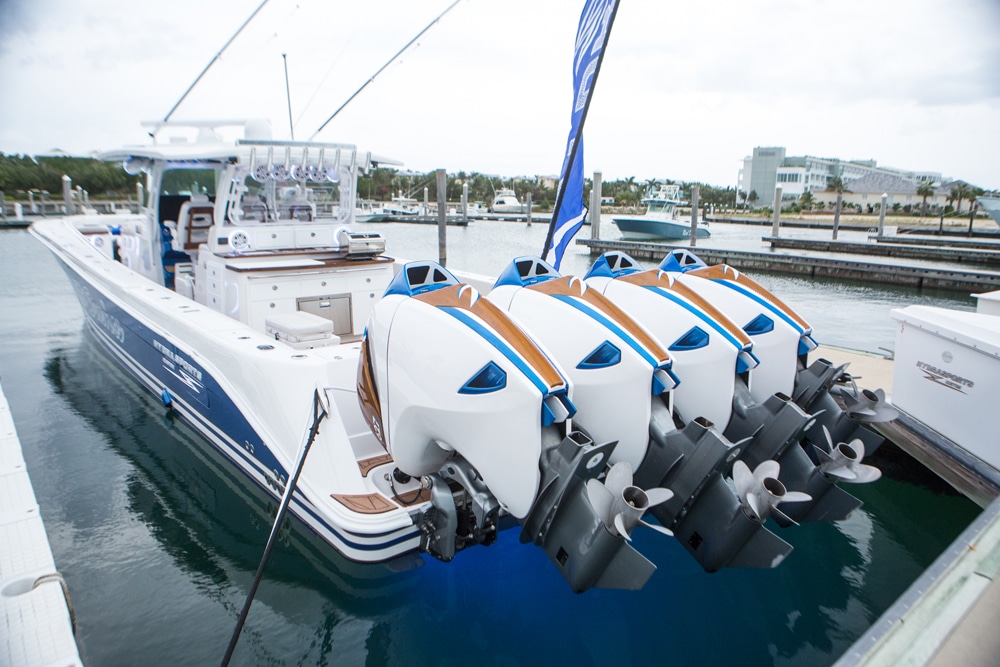
Probably the best evidence of foul weather and rough seas is large center consoles like this HydraSports Custom docked for the day. This vessel featured four spotless Seven Marine 627 outboard engines.
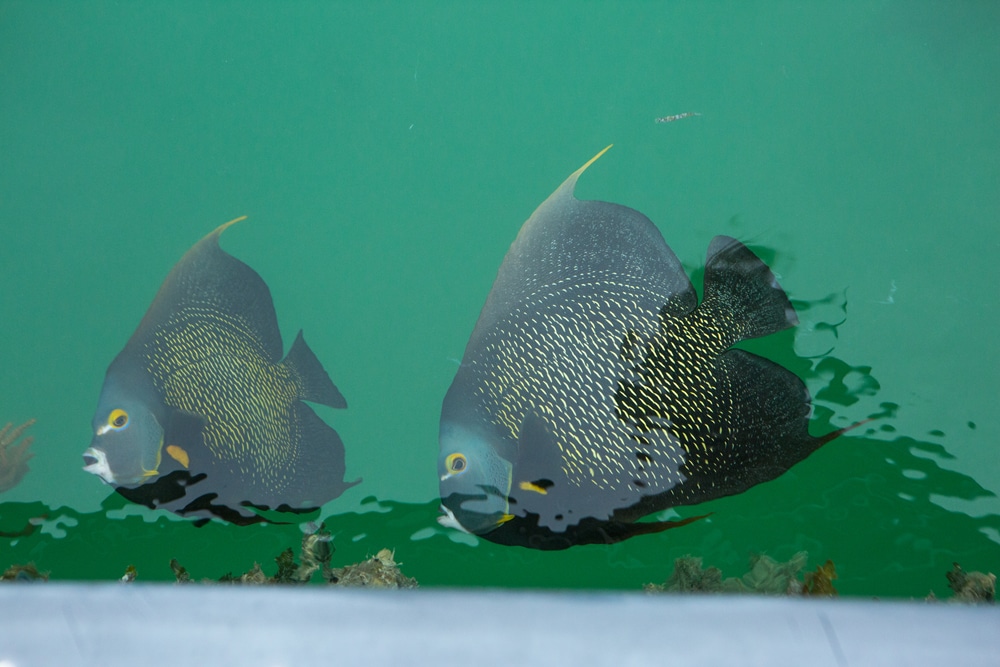
Coral and fan growth on the floating docks attracted these two hungry angelfish. Turned sideways in the water, they pecked on different corals and sponges for a meal. The twins let us get surprisingly close before darting into the shadows.
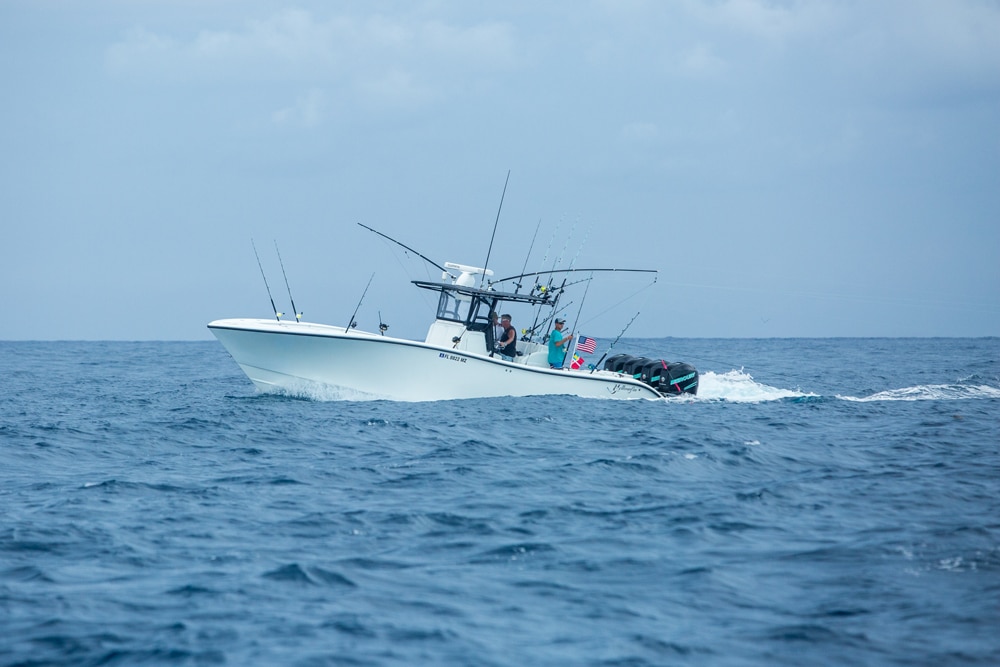
Finally, an afternoon weather window opened, allowing us to head offshore. The first place I wanted to explore was the massive drop just outside the inlet. Within swimming distance to shore, ocean depths change from 50 to 700 feet. Nearby, a Yellownfin center console kept pace with us as we trolled skirts and plugs.
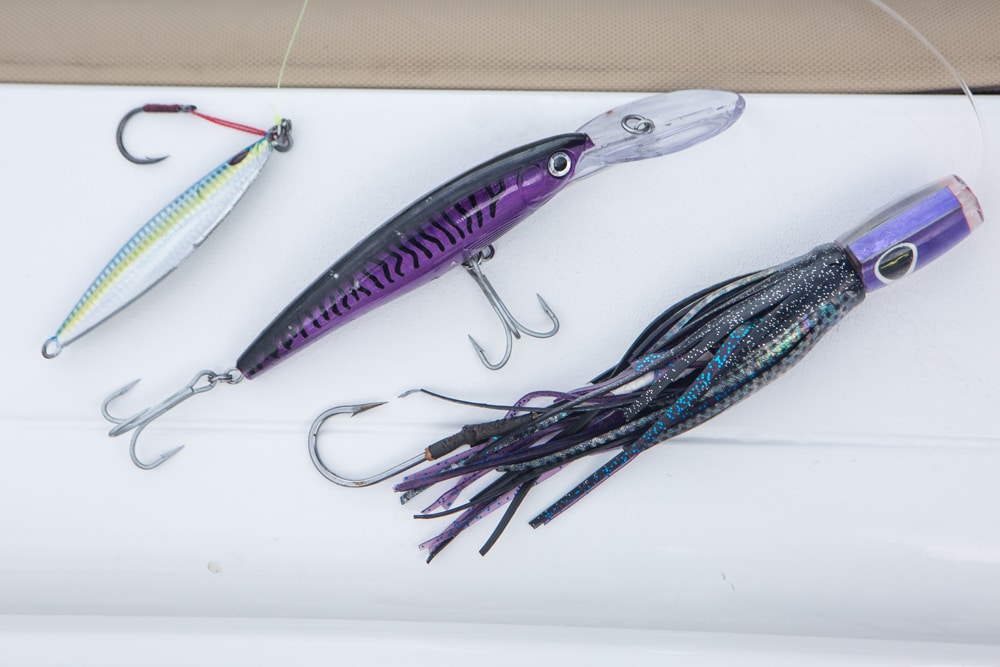
Our captain, Chris Munnings, explained anglers can expect to catch marlin, sailfish, mackerel and other species in June. Wahoo show from October to March, and dolphin are a common catch in the late summer months. We trolled skirts and Rapala deep-diving lipped baits along the drop. When yellowtailing, I dropped down a Williamson metal jig, left, in 100 feet to see if anyone was home.
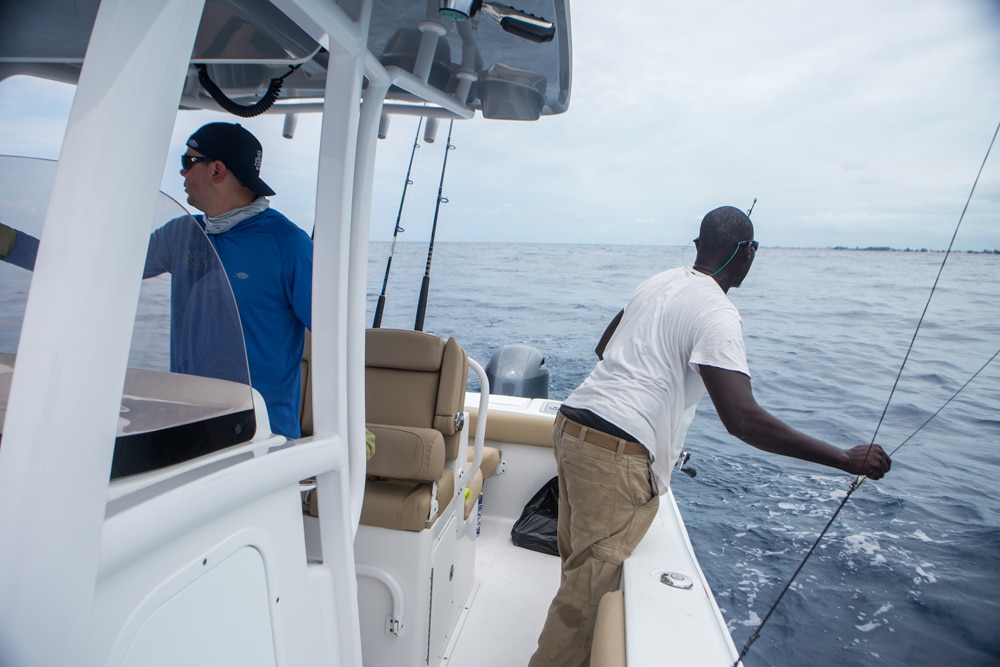
With the trolling bite not happening, we headed to a wind-protected yellowtail snapper spot. Munnings said the trick was to get the yellowtails to show in the chum line. He was not referring to our photographer, Zach, who also made his own chum in the rough conditions.
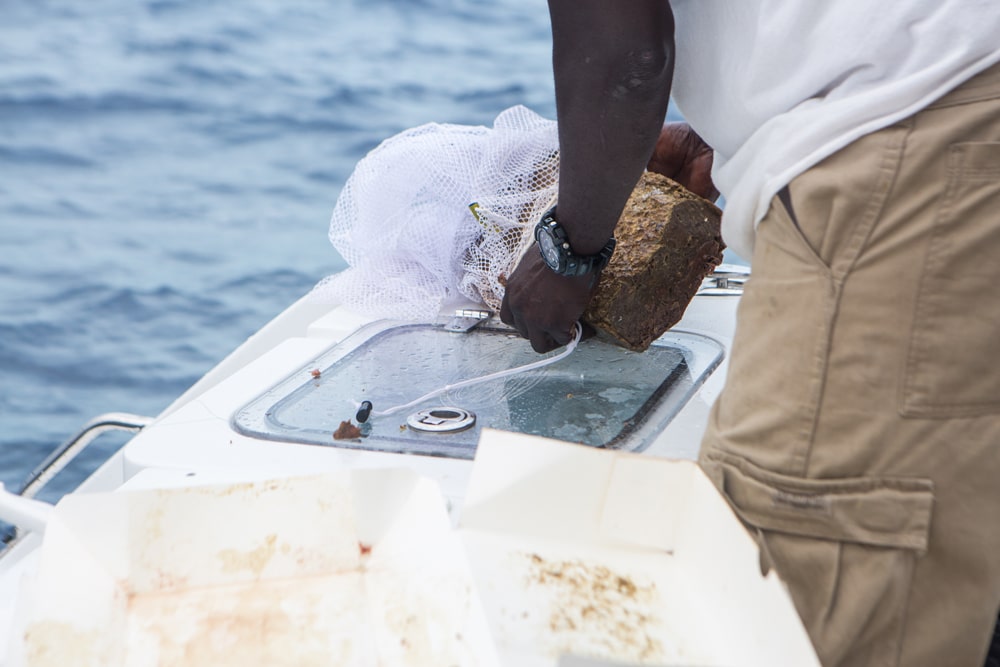
Fishing above rock and reef, we tried our best to attract fish away from their lairs with healthy doses of chum. But on this day, only chub came to the surface. Live bait is hard to buy around Bimini, so live baitfish must be caught by net or hook-and-line. We dropped back squid chunks, hoping a yellowtail would find our hook.
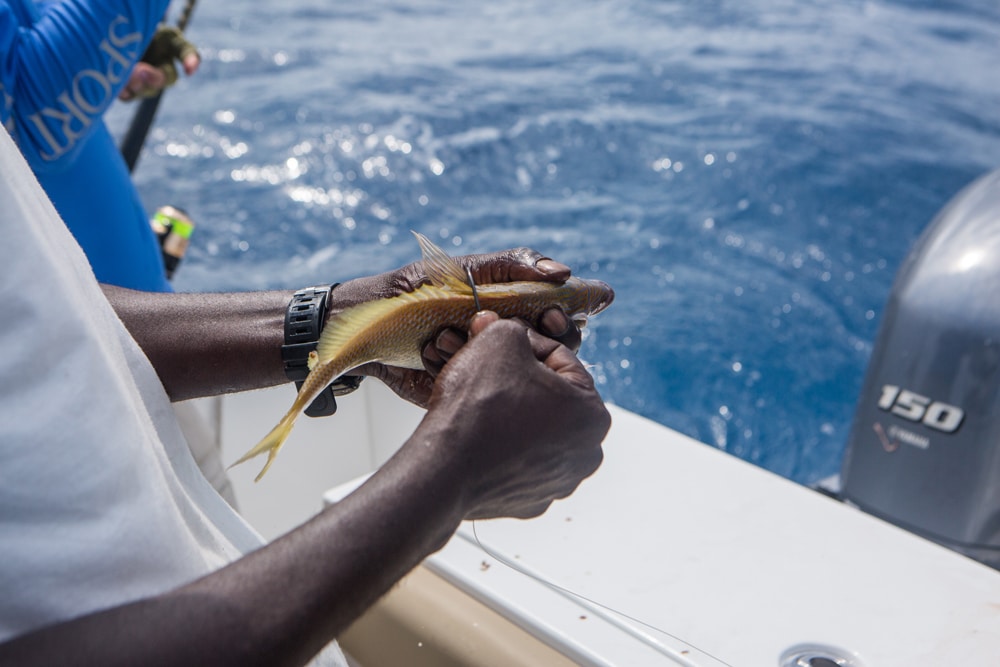
If the snapper didn’t show, the next best option was to drop down squid chunks as bait to catch baitfish like grunts. The grunts are perfect offerings for large grouper and amberjack.
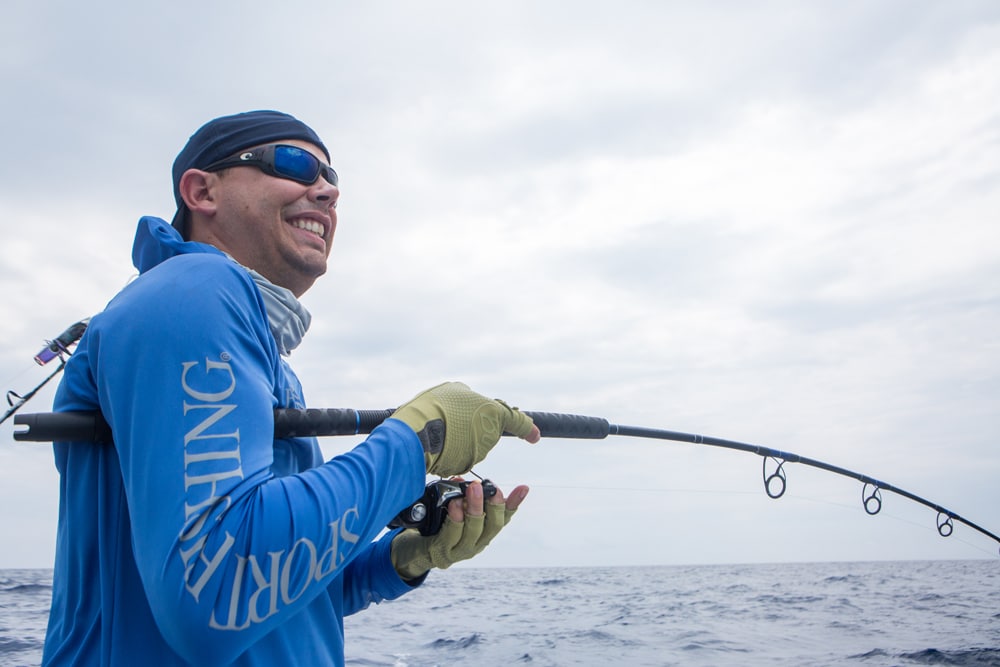
A couple different times, we were able to get a whole live grunt or chunk of other baitfish to the bottom. Each time, some mysterious monster would slam our bait and take it into the rocks. Munnings mentioned it could be any number of grouper species, including goliath grouper, or giant amberjack.
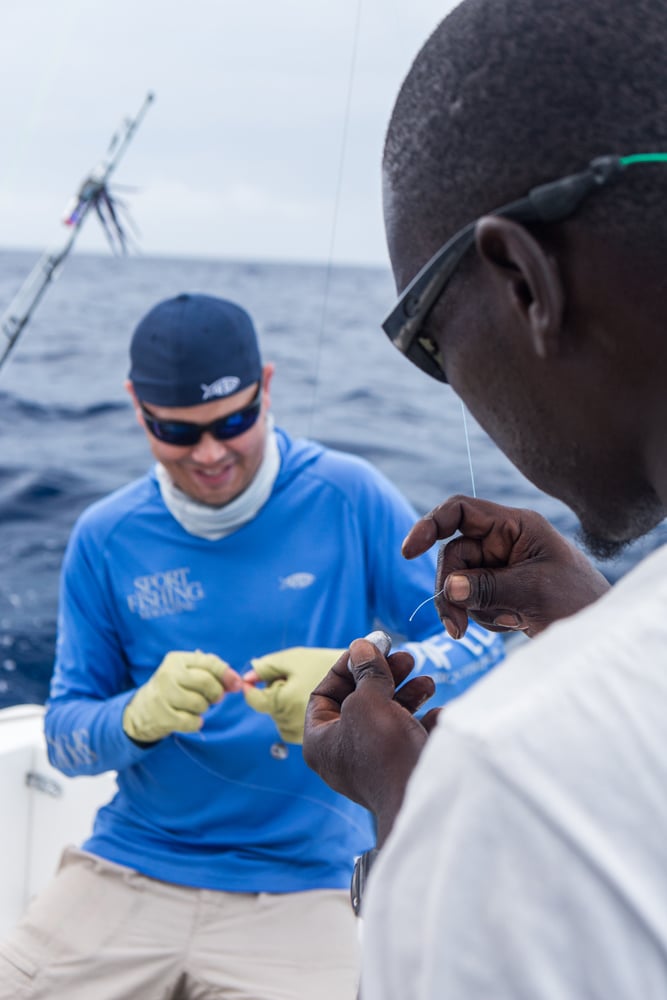
We spent more time than I care to admit re-rigging after losing fish battles. On one hand, tightening the drag and horsing the fish from the rocks can pull them away from structure. But you risk snapping the line or pulling the hook. Working a fish methodically meant you had no chance at pulling fish away from the structure. We even tried to wait out a couple fish, but they never left their holes after being hooked.
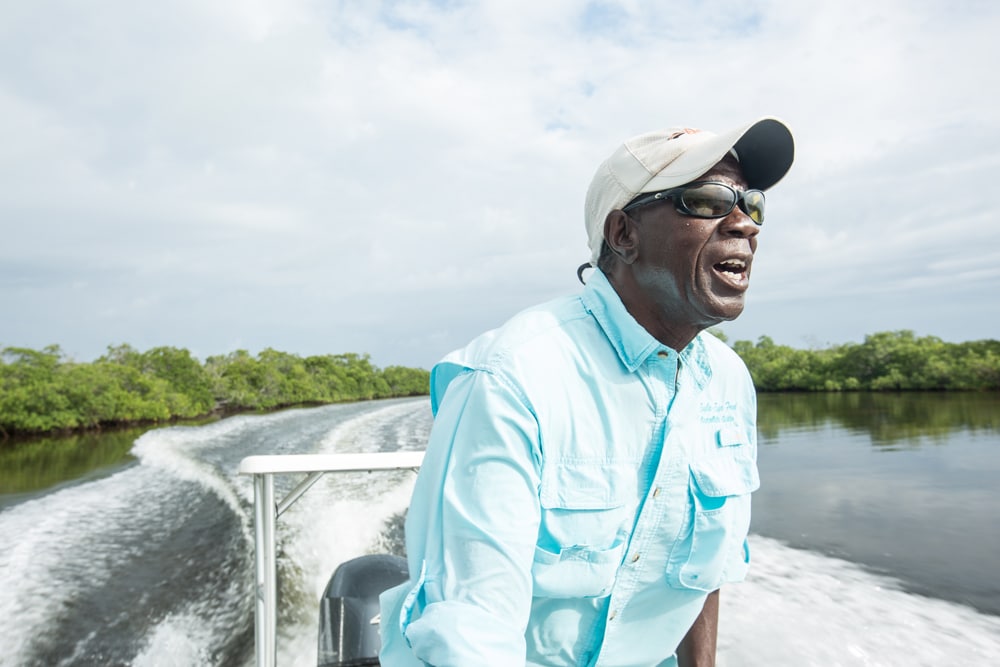
Capt. “Eagle Eyes” Fred Rolle took us fishing one final morning. We made our way out to the Bimini flats, home to massive schools of bonefish and cruising permit. On the way out, we dodged storms while running through lush mangrove tunnels.
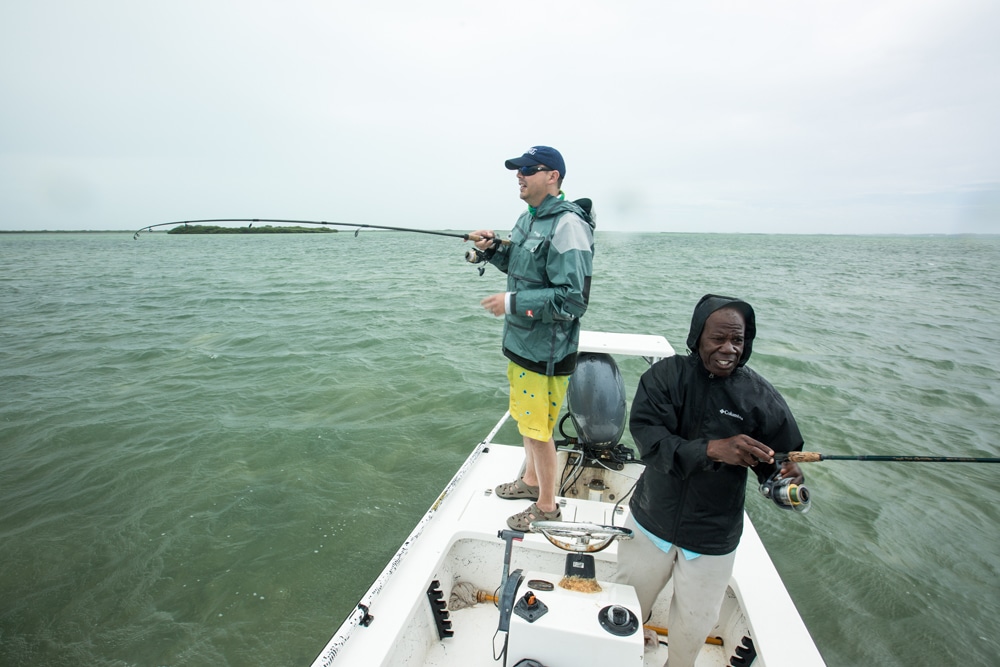
But then the rain and lightning reached us, along with winds that topped 18 knots. With the flats white-capping, we were forced to run for cover. Rolle finally anchored us in 4 feet of water inside a bay. Nearby, scientists checked on sharks inside fenced areas as part of Bimini Sharklab research. We tossed fresh dead shrimp behind the boat to see if any bonefish were around.
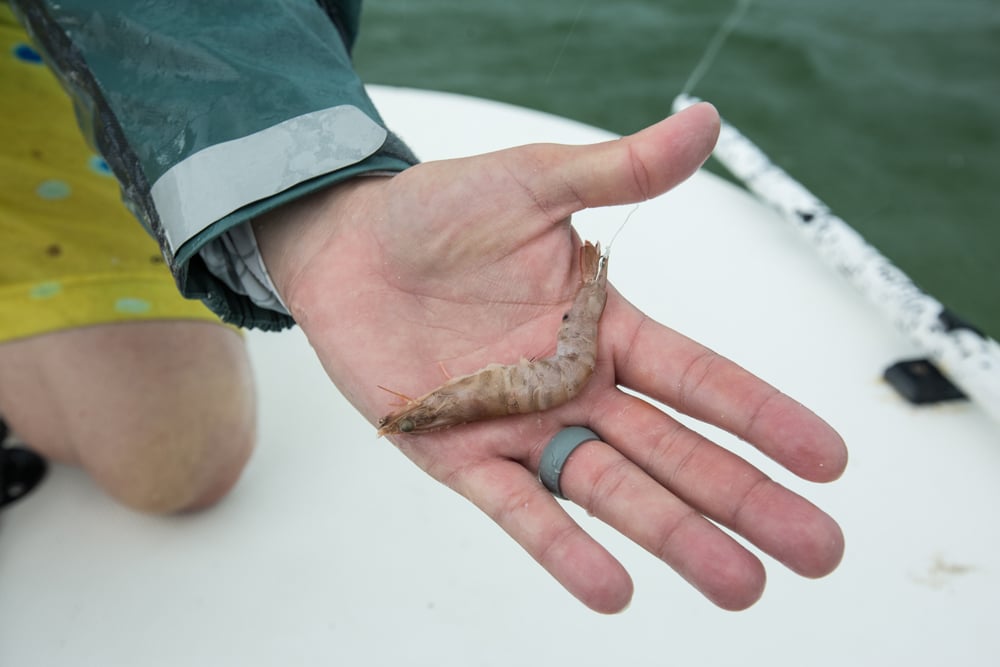
Fishing from an anchored boat, we had to soak fresh dead shrimp to attract bonefish. Capt. Rolle much rather his boat do the searching, with him on the poling platform, scouting skinny flats. He rigs his shrimp tail first, with the hook buried inside the shrimp.
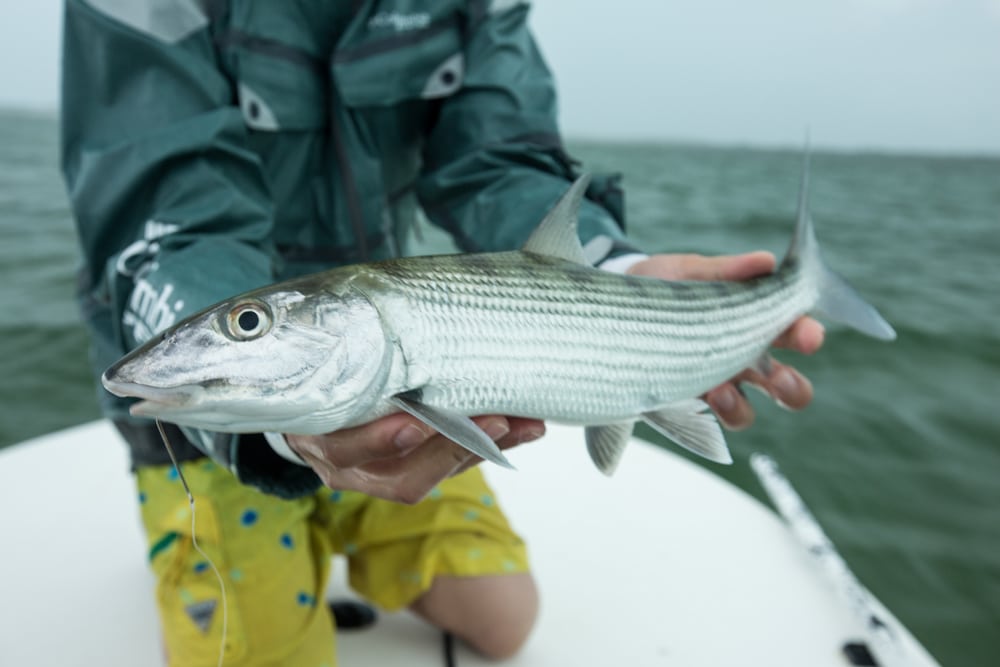
Capt. Rolle knows bonefish movement patterns better than anyone on the island, and soon one of our rods bent over like a whip snapping in the air. I grabbed the rod and fought a bonefish to the boat that had no business pulling as hard as it did. The bonefish was just a couple pounds, but the whole boat felt relieved and justified after catching a fish in such conditions.
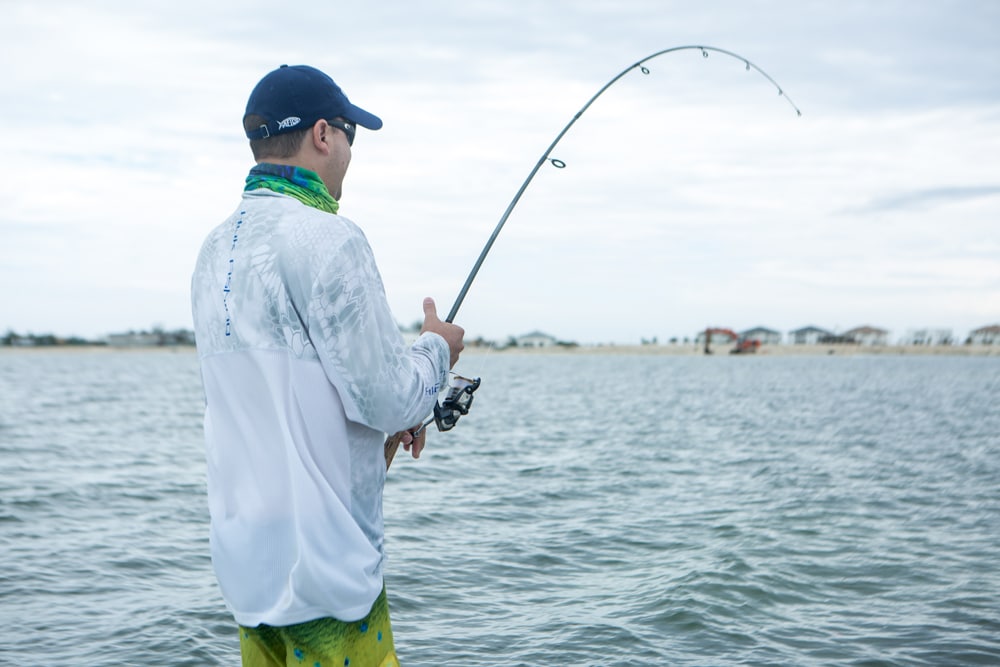
The next hookup wasn’t a bonefish. This fish had more weight and stayed close to the bottom. Capt. Rolle thought it might be a stubborn stingray hunkered down in the grass. Soon the fish took off, and Rolle had to chase after it with the outboard. Eventually, the fish tired and stubbornly circled the boat.
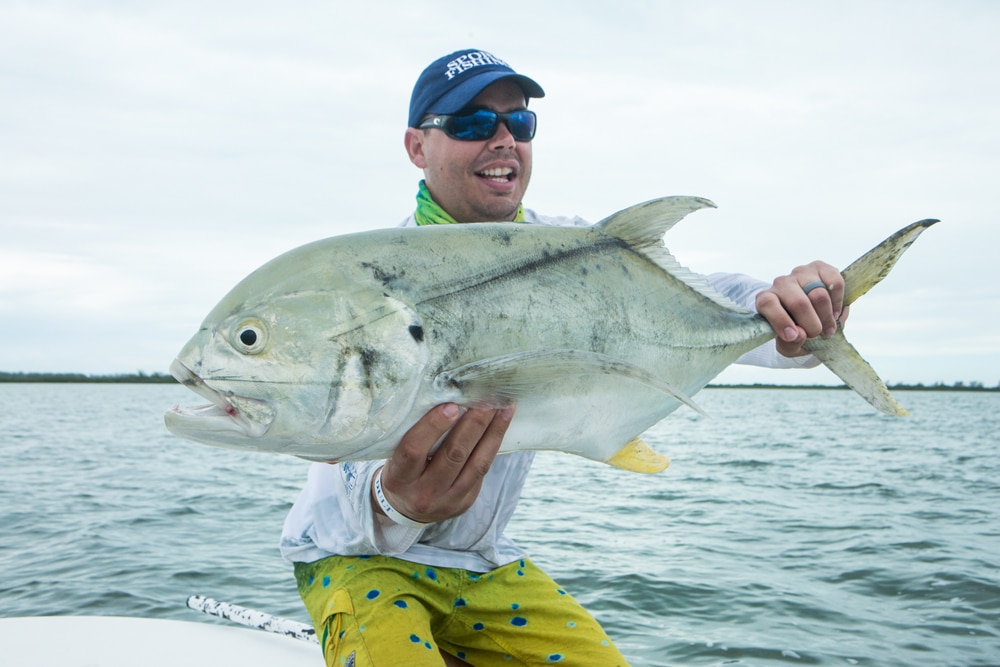
Was it a permit that bit our shrimp? Nope, the mysterious fish turned out to be a fun-size jack crevalle of about 15 pounds. The jack completed our day of fishing, and we soon returned back to the docks at the Hilton.
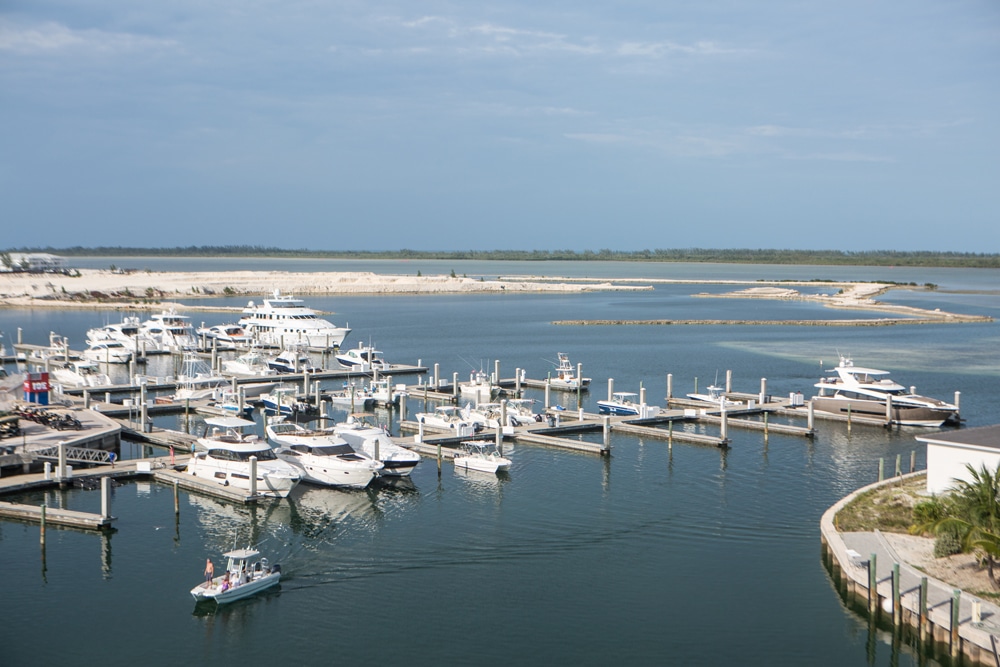
The day we left the resort it was beautiful outside, with enough sun to light up the waters in dark and light blue hues. Boats emptied the marina behind the casino at the Hilton resort. Pictured, yachts and a number of straggler World Cats remained at their slips before heading offshore. A World Cat boat owners event occurred the same days we stayed, and some of the stories they told crossing the Gulf Stream were harrowing.
I can’t wait to get back to Bimini soon to truly experience the world-class fishing the island has to offer.








